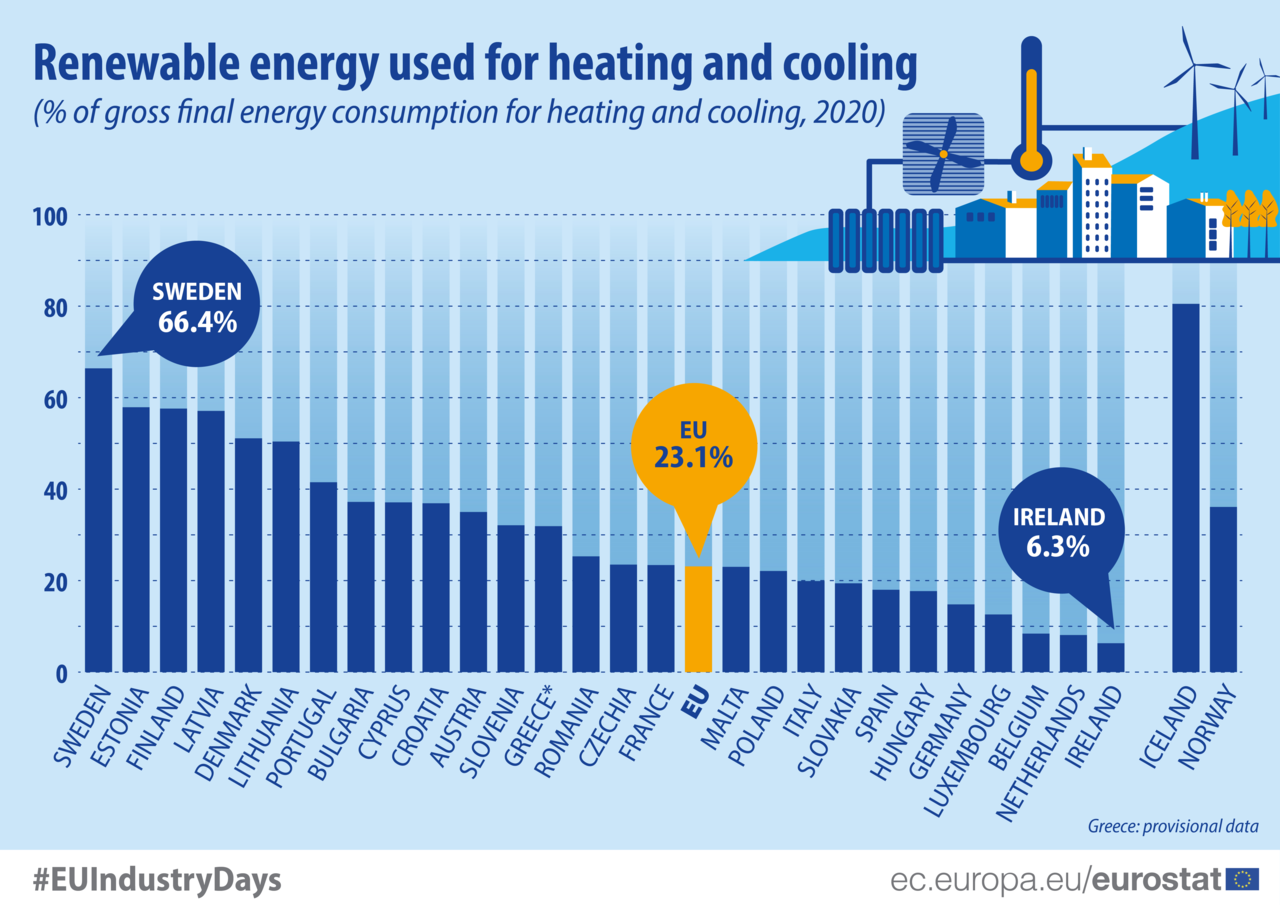Renewable energy for heating and cooling in the EU in 2020
The share of renewable energy sources used for heating and cooling in the EU continues to increase steadily, from 22% in 2019 to 23% in 2020. The share was above 50% in six Member States as opposed to four in 2019.
Recent figures published by Eurostat for the European Commission show that 23.1% of total energy use for heating and cooling in the EU came from renewable sources in 2020.
Among the Member States, Sweden stands out with two thirds (66.4 %) of the energy used for heating and cooling in 2020 stemming from renewable sources (mostly biomass and heat pumps). The share of renewable energy for cooling and heating exceeded 50% in the following EU Member States: Estonia (57.9%), Finland (57.1%), Latvia (57.1%), Denmark (51.1%) and Lithuania (50.4%).
In Iceland, which is an EFTA country, 80.5% of the energy used for heating and cooling came from renewable sources (mostly geothermal energy).
In contrast, in Ireland (6.3%), the Netherlands (8.1%) and Belgium (8.4%) renewable sources contributed the least to heating and cooling.
The diagram below shows the share of renewable energy used for cooling and heating in each country in 2020.

Sources
https://ec.europa.eu/eurostat/web/products-eurostat-news/-/edn-20220211-1
https://ec.europa.eu/eurostat/statistics-explained/index.php?title=Renewable_energy_statistics
